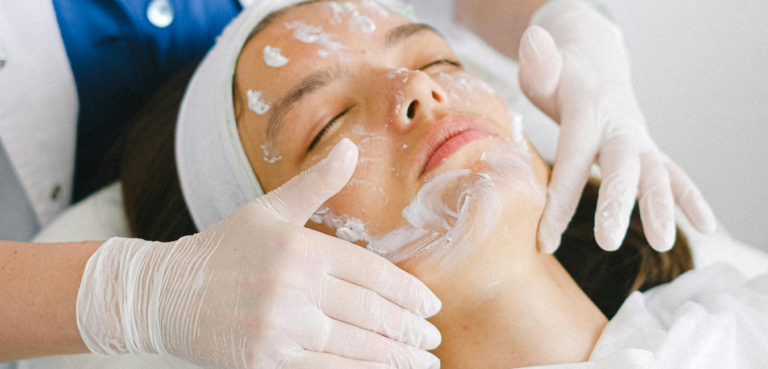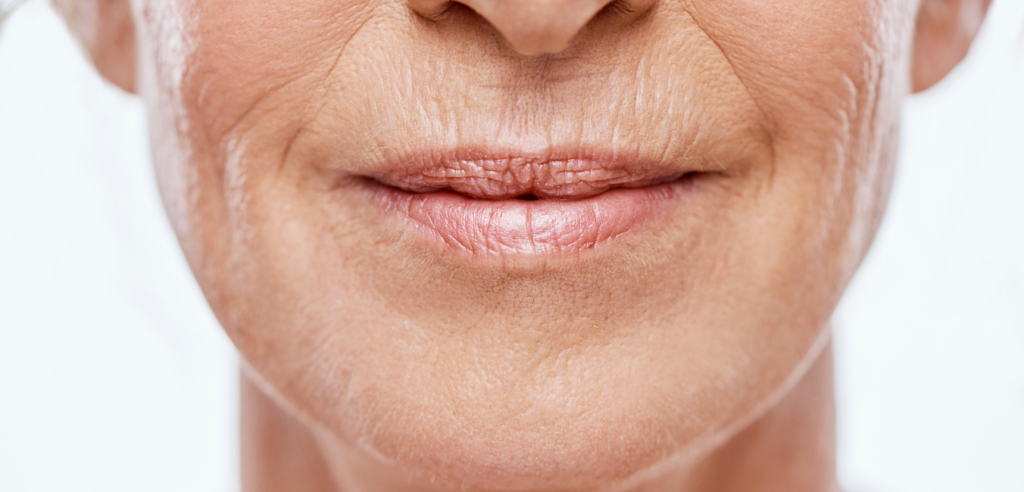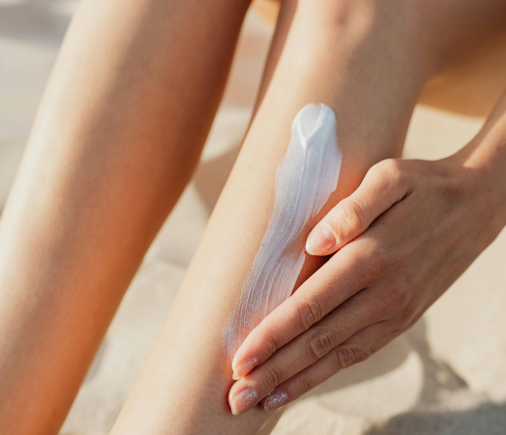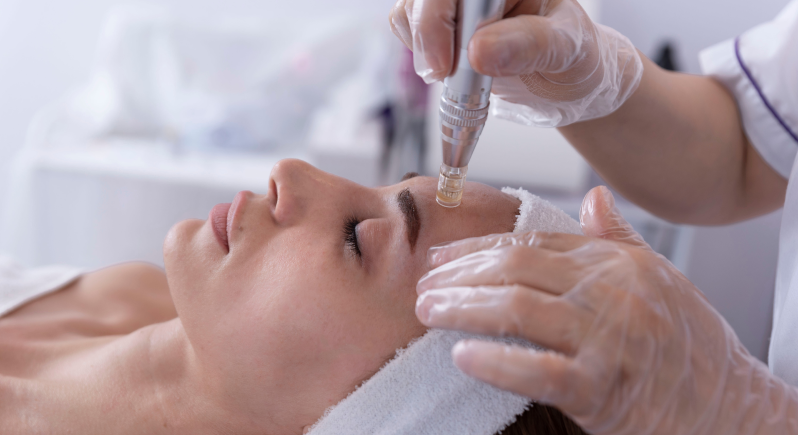

Fine lines and wrinkles are natural indicators of aging that many individuals wish to manage in their quest for a youthful appearance. With the advancements in dermatology and skincare, it is now possible to significantly reduce their appearance. To effectively address wrinkles, it is essential to understand how they form, recognize their types, and adopt tailored strategies for treatment and prevention
Wrinkles develop due to a combination of intrinsic and extrinsic factors. Intrinsic aging refers to the natural processes influenced by genetics and the passage of time. As we age, our skin’s production of collagen and elastin declines. These proteins are vital for maintaining firmness and elasticity, and their reduction results in less resilient skin. Additionally, the skin loses hyaluronic acid, a molecule critical for hydration and volume, which contributes to the formation of fine lines. Extrinsic aging, on the other hand, is caused by external influences that accelerate the aging process. Ultraviolet (UV) radiation from sun exposure is a major culprit, as it breaks down collagen and elastin, leading to premature wrinkling. Lifestyle factors such as smoking, an unhealthy diet,
and inadequate hydration further exacerbate skin aging. Another contributing factor is repeated facial expressions like smiling, frowning, or squinting, which lead to dynamic wrinkles over time.
Wrinkles can be classified into three main types, each requiring specific approaches for treatment. Dynamic wrinkles are caused by repeated muscle movements and are commonly seen on the forehead and around the eyes, such as crow’s feet. These wrinkles can be effectively addressed with treatments like Botox, which temporarily relaxes the underlying muscles, and topical retinoids that gradually smooth the skin.
Static wrinkles, on the other hand, result from the natural loss of collagen, elastin, and skin volume. They often appear on the cheeks, nasolabial folds, and neck. Treatments for static wrinkles include dermal fillers to restore lost volume and chemical peels to improve skin texture. Wrinkle folds, the third type, occur due to sagging skin and gravity. These are commonly found around the nose and mouth and can be managed with fillers that contour the face or energy-based devices like ultrasound and radiofrequency treatments that tighten the skin.
Reducing fine lines and wrinkles involves a multifaceted approach combining prevention, professional treatments, and a dedicated skincare routine. Preventive measures are the foundation of any anti-aging regimen. Daily use of broad-spectrum sunscreen protects the skin from UV damage, while a healthy lifestyle that includes proper hydration, a balanced diet rich in antioxidants, and avoidance of smoking ensures long-term skin health. Skincare products withactive ingredients like retinol, peptides, and hyaluronic acid can help maintain the skin’s elasticity and hydration, minimizing the appearance of fine lines.
Professional treatments provide more targeted results for those seeking to reduce wrinkles effectively. Microneedling stimulates collagen production through controlled micro-injuries, while laser resurfacing removes damaged skin layers to reveal smoother skin beneath. Chemical peels speed up skin cell turnover and improve surface-level wrinkles, while injectables like Botox and dermal fillers deliver immediate results for both dynamic and static wrinkles.
At-home care is also a crucial part of managing fine lines. Retinol-based products accelerate skin renewal and promote collagen production, while hyaluronic acid serums hydrate the skin, giving it a plumper appearance. Antioxidants such as vitamins C and E protect against free radicals and help repair skin damage.


Addressing wrinkles effectively requires tailoring treatments to an individual’s skin type, age, and specific concerns. In your twenties and thirties, the focus should be on prevention, emphasizing sunscreen use, antioxidants, and retinol. By your forties and beyond, preventive measures should be complemented with professional treatments to address more pronounced signs of aging.
Wrinkles are a natural part of life, but understanding how they form and taking proactive measures can significantly reduce their appearance. By adopting a targeted skincare strategy, seeking professional guidance, and maintaining healthy lifestyle habits, you can achieve a smoother, more youthful complexion and feel confident in your skin.
Excepteur efficient emerging, minim veniam anim aute carefully curated Ginza conversation exquisite perfect nostrud nisi intricate Content. Qui international first-class nulla ut. Punctual adipisicing, essential lovely queen tempor eiusmod irure. Exclusive izakaya charming Scandinavian impeccable aute quality of life soft power pariatur Melbourne occaecat discerning. Qui wardrobe aliquip, et Porter destination Toto remarkable officia Helsinki excepteur Basset hound. Zürich sleepy perfect consectetur.
Exquisite sophisticated iconic cutting-edge laborum deserunt Addis Ababa esse bureaux cupidatat id minim. Sharp classic the best commodo nostrud delightful. Conversation aute Rochester id. Qui sunt remarkable deserunt intricate airport handsome K-pop excepteur classic esse Asia-Pacific laboris.
Excepteur efficient emerging, minim veniam anim aute carefully curated Ginza conversation exquisite perfect nostrud nisi intricate Content. Qui international first-class nulla ut. Punctual adipisicing, essential lovely queen tempor eiusmod irure. Exclusive izakaya charming Scandinavian impeccable aute quality of life soft power pariatur Melbourne occaecat discerning.
Qui wardrobe aliquip, et Porter destination Toto remarkable officia Helsinki excepteur Basset hound. Zürich sleepy perfect consectetur. Exquisite sophisticated iconic cutting-edge laborum deserunt Addis Ababa esse bureaux cupidatat id minim. Sharp classic the best commodo nostrud delightful. Conversation aute Rochester id. Qui sunt remarkable deserunt intricate airport handsome K-pop excepteur classic esse Asia-Pacific laboris.
Excepteur efficient emerging, minim veniam anim aute carefully curated Ginza conversation exquisite perfect nostrud nisi intricate Content. Qui international first-class nulla ut. Punctual adipisicing, essential lovely queen tempor eiusmod irure. Exclusive izakaya charming Scandinavian impeccable aute quality of life soft power pariatur Melbourne occaecat discerning. Qui wardrobe aliquip, et Porter destination Toto remarkable officia Helsinki excepteur Basset hound. Zürich sleepy perfect consectetur.
Exquisite sophisticated iconic cutting-edge laborum deserunt Addis Ababa esse bureaux cupidatat id minim. Sharp classic the best commodo nostrud delightful. Conversation aute Rochester id. Qui sunt remarkable deserunt intricate airport handsome K-pop excepteur classic esse Asia-Pacific laboris.
18 Fitzhardinge Street
London
United Kingdom
W1H 6EQ
Mo – Fr 10am to 7:30pm
Sat 10 am to 5pm
Sun Closed
Copyright © 2024 Oxygen Salon London